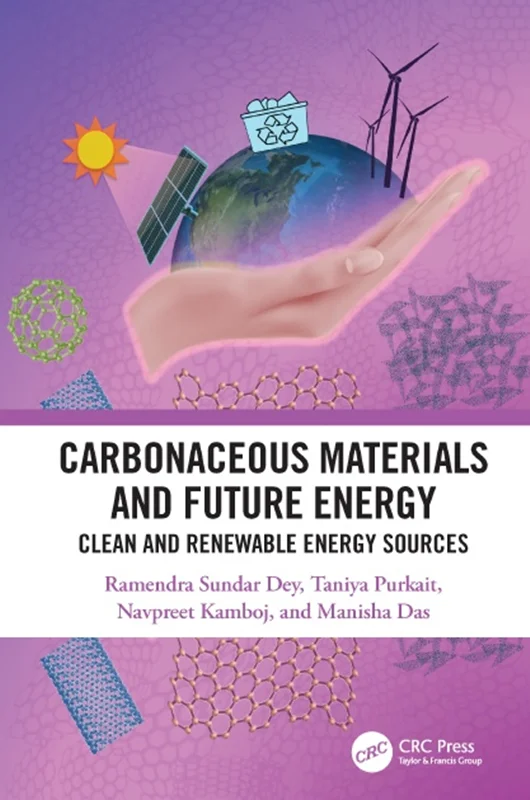Carbonaceous Materials and Future Energy: Clean and Renewable Energy Sources
Ramendra Sundar Dey, Taniya Purkait, Navpreet Kamboj, Manisha Das | ISBN: 081534788X, 978-0815347880, 9780815347880, B0818BHJ84
Carbonaceous Materials and Future Energy: Clean and Renewable Energy Sources provides a systematic analysis of the emerging renewable energy alternatives to fossil fuel and their impact on the current socio-economic premise, with carbonaceous chemistry at their base. The present-day fossil fuel–dependent energy scenario is obsolete, rapidly decaying with resource constraints and sparking climate change risks like global warming; therefore, a technological revolution is needed in terms of global energy sustainability. This book is a humble attempt to recognise various contemporary as well as transpiring alternative state-of-the-art energy technologies, and the immense potential carbon materials have in changing the future face of energy. Carbon is the most earth-abundant material with an awe-inspiring range of allotropes that render wonderful properties such as tunable morphology, electrical conductivity, impressive surface area, etc., when explored in the nanoscale. Therefore, carbon has the ability to replace expensive and corrosive metals as electrodes in various existing energy technologies, especially in storage, conversion and harvesting. Carbon-based composite materials offer extensive mechanical strength, although they are super lightweight and can be placed in portable devices, yet perform for longer times with the added benefit of recyclability.
This book features discussions on the ecological impacts of the existing fossil fuel–based energy technologies along with various global energy prediction indicators that dictate the integrated risk, the multi-scale changes as well as the need for sustainable alternatives. It also highlights various state-of-the-art renewable energy techniques, including solar photovoltaics, wind, geothermal, and biowaste-based energy. Most importantly, recognition is given to hybrid energy storage and conversion systems as today’s most important and sustainable source of power based on carbonaceous materials, especially their abundance, tunability, and recyclability. The author then focuses on the integration of available experimental information with future prospects for delivering real-world solutions to existing energy scarcity and helping to unravel sustainable routes with improved energy laws and policies.
Features
•Detailed discussion about the current worldwide energy crisis at the societal scale and the gradual growth of alternative sustainable energy options
•Elucidation of the role of carbon in revolutionising nanoscience and its bright prospects in developing the future energy scenario with its abundance, eco-friendly nature as well as recyclability
•Extensive discussion of various state-of-the-art energy systems including hybrid technologies and their stages of technological maturity, commercialisation, and future prospects.
•Presentation of information in an accessible way for a broad audience; especially students, researchers, and scientists, working in the vast field of energy, looking for concise information about current and future energy solutions and exploring them with carbonaceous chemistry


